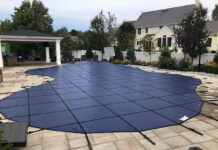Buying a home is a major life decision. And if you’re like 99 percent of homebuyers, you’re purchasing with some type of loan product. The question is, which kind of mortgage will you choose?
Comparing Your Home Loan Options
Shopping for a home loan is a lot like shopping for a physical product like a car, computer, or set of golf clubs. There are a variety of options on the market, and you have to consider your own personal needs prior to making a purchase.
As you look for a home loan, it’s recommended that you explore as many different types of mortgage products as possible. In particular, compare the following:

- Fixed-Rate Mortgages
The fixed-rate mortgage is the first type of home loan most people consider. It’s preferred for its predictability and ease of access. Borrowers are promised the same interest rate and monthly payment over a period of 10, 15 or 30 years.
According to Loans.com.au, the best thing you can do when rates are low – as they’ve been over the past decade – is to lock into a fixed-rate mortgage. In fact, doing so can save you tens of thousands of dollars over the life of the loan.
- Adjustable-Rate Mortgages
If you have fixed-rate mortgages on one end of the home loan spectrum, adjustable-rate mortgages (ARMs) sit at the other end. As the name suggests, these are loans that give the lender the opportunity to adjust rates after a certain period of time.
ARM loans typically offer a lower than normal interest rate for a period of time – typically three, five, or 10 years – but allow for the lender to adjust rates once per year after the introductory period expires. If you anticipate moving or refinancing within a few years, an ARM is a great bet. If you want predictability, you’re better off selecting a fixed-rate mortgage.

- Government-Insured Mortgages
While the United States government isn’t in the business of lending money to people to buy homes, they do play a helpful role in facilitating the process. They do so by offering backing certain types of home loans.
There are three types of government-insured mortgages: FHA loans (backed by the Federal Housing Administration), USDA loans (backed by the U.S. Department of Agriculture), and VA loans (backed by the U.S. Department of Veterans Affairs). Each of them has different requirements, though they all tend to feature low down payments (zero-down, in some cases).
- Jumbo Loans
When it comes to conventional mortgages – i.e. home loans that aren’t insured by the federal government – there are two types: conforming and non-conforming. In the vast majority of cases, lenders only give out conforming loans. (It would be irresponsible to do otherwise.) However, there are certain situations in which lenders will approve a borrower for a non-conforming loan. A jumbo loan is the most common type of non-conforming loan.
The current maximum for a conforming loan is right around $484,000. In high-cost areas, it’s more like $750,000. Any time a conventional loan exceeds these thresholds, it’s considered a jumbo loan. Borrowers will usually be required to put down at least 10 to 20 percent, have an excellent credit score, and possess a debt-to-income ratio below 45 percent.
Don’t Make Yourself House Poor

Millions of Americans suffer from the symptoms of being poor, despite the fact that they have better-than-average incomes. It’s the direct result of irresponsible spending and poor financial planning. And in most cases, it comes down to being house poor.
House poor is the term typically used to describe a person who spends a large percentage of their income on home ownership. This includes mortgage payments, insurance, property taxes, utilities, and maintenance.
According to Investopedia, “A house poor person can be considered anyone whose housing expenses account for an exorbitant percentage of their monthly budget. People can find themselves in this situation for a number of reasons. In some cases, a consumer may have underestimated their total costs. Alternatively, a change in income may be the reason that housing expenses have become overwhelming.”









